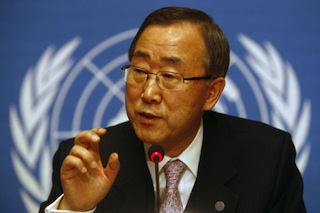27th November, 2014

United Nations agency, UNCTAD’s Least Developed Countries Report 2014 says that the international community must learn from the failure of most of the poorest countries to meet the Millennium Development Goals (MDGs) despite registering strong economic growth – a phenomenon the report dubs the “LDC paradox”.
The report says that world’s 48 least developed countries (LDCs) are the battleground on which the post-2015 development agenda will be won or lost: its success will depend on action by the international community and the LDCs to structurally transform their economies and break the vicious circle of human and economic development that has trapped these countries in poverty.
The “LDC paradox” arises from the failure of their economies to achieve changes in their economies despite having grown strongly as a result of strong export prices and rising aid flows.
Subtitled “Growth with Structural Transformation: a Post-2015 Development Agenda,” the report highlights key policy priorities as part of a post-2015 development agenda for LDCs. The core of this agenda should be a virtuous circle between economic and human development, reversing the vicious circle currently trapping LDCs, the report says.
Meanwhile, sub-Saharan Africa needs to double its investment in agricultural research to meet the challenges of high population growth, climate change and deteriorating soils, a new report said on Wednesday.
More women researchers must be trained, and the large number of countries that spend less on research than recommended should note the clear link between new research spending and increased food production, the report said.
“It is critical that African countries invest more in agricultural research to ensure that they can feed their populations,” Nienke Beintema, one of the authors of the report ‘Taking Stock of National Agricultural R&D Capacity in Africa South of the Sahara’, said in a statement.
The report, by researchers from the International Food Policy Research Institute (IFPRI), said the quality of research in sub-Saharan Africa, and thus the region’s food security, still suffer from underinvestment, inadequate human resource capacity, poor research infrastructure, and a lack of coherent policies.
There have been some notable improvements, but new capacity is not always enough to keep pace with increasing challenges, it said.
The region’s public agricultural research capacity increased by 50 percent during 2000-2011 to the equivalent of 14,500 full-time researchers.
But many of the most experienced researchers are approaching retirement, causing concern for policy makers.
The report urged more training for female researchers, which analysts believe is particularly important in a region where the majority of farmers are women.
While gender inclusion is generally improving, 10 of the 27 countries with applicable data recorded a decline in the proportion of female agricultural researchers for 2008-2011.
Public research spending across the region grew by more than 30 percent in real terms, from $1.2 billion in 2000 to $1.7 billion in 2011.
But three countries – Nigeria, South Africa and Kenya – were responsible for almost half the new growth.
The links between new money for research and increased food production are clear, the researchers reported.
From the mid-1990s, regional agricultural output grew at an average rate of 3.5 percent per year, compared with only 1.1 percent per year during 1971-1985, when less money was going to research.
Of the 38 countries surveyed, 28 fall short of the minimum agricultural investment targeted by the African Union and the United Nations.


